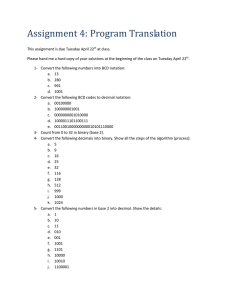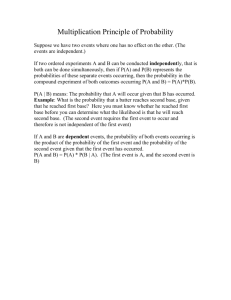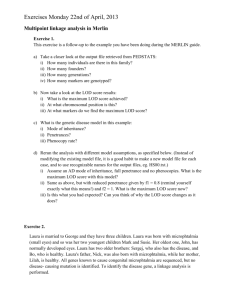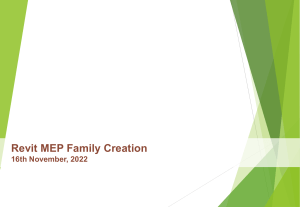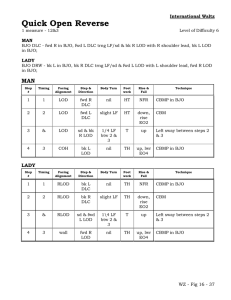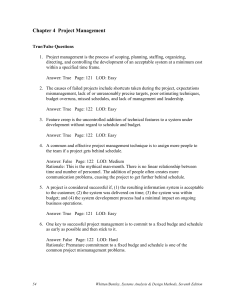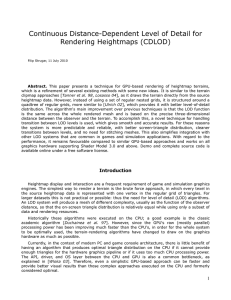Claims made
advertisement
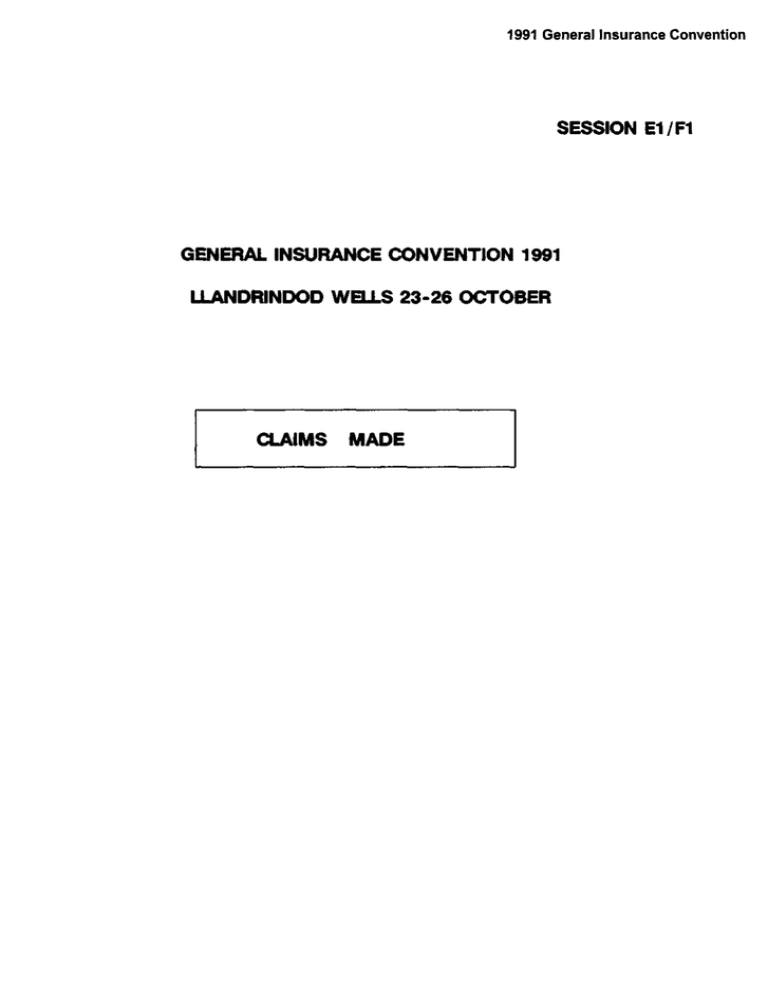
SESSION E1/F1 GENERAL INSURANCE CONVENTION 1991 LLANDRINDOD WELLS 23-26 OCTOBER CLAIMS 1991 General Insurance Convention MADE COVERAGE TRIGGERS by Colin Czapiewski and David Craighead 1. 2. Introduction 1.1 There is a considerable vacuum in the knowledge of insurance personnel in the area of claims coverage. Both actuaries and non-actuaries too often do not appreciate the significant difference that a change in claims coverage can mean to a policy. 1.2 A paper detailing the problems related to this topic is desperately needed. The change from occurrence based to claims made (generally for professional indemnity contracts and specifically for USA Medical Malpractice business in the mid-1980's) is causing problems with data development, and so many actuaries are not dealing with the change properly. Aim 2.1 At this breakout session we will explore and understand the general issues of claims coverage. We will highlight the problems involved. Finally we will try to solve the problems or at least try to define the correct course of action for an actuary facing these problems. 2.2 2.3 3. The main problems are as follows:i) how to rate a claims made product given only data on an occurrence basis ii) how to allow for a change from occurrence to claims made (and vice versa) in claims projection. These problems are very practical in that the authors do not claim to know the answers to the problem. A group discussion may well provide a very useful exercise for us all. Basic Types of Coverage 3.1 Losses Occurring During (LOD) Historically, the date of loss triggered the policy. The policy commenced on a specific date; it expired on a specific date, most commonly one year later. Losses occurring during that time triggered the coverage under the policy. This is called the LOD basis (Losses Occurring During). Additional features may be added to the LOD policy. To curtail the length of the tail and to encourage early reporting of claims, a "sunset clause" may be introduced. Typically this may be for five years. Any claims first notified five years after the commencement of the policy, whilst occurring during the policy period, are not covered. 3.2 Risks Attaching If a reinsurance policy protects all primary policies effected during the period under cover, then the period of exposure stretches not from commencement of the reinsurance policy to expiry, but from the commencement of all the primary policies until their expiry. This is referred to as the risks attaching coverage. Losses occurring in the policy period of the primary policies that were effected during the period of the reinsurance policy trigger a loss to the reinsurance. The incidence of exposure covers a period longer than that experienced under the coverage of a LOD policy. 3.3 Claims Made with the emergence of latent claims and other very long tail losses, the date of loss is not easy to determine. If a claimant was exposed to a dangerous substance for many years and then a disease manifests itself, what is the date of loss? Furthermore, the case may go to Court and the date of proof of guilt may be taken as the date of loss, thus further complicating matters. These long tail claims make pricing and reserving very difficult. It may be preferable if the date of first notification of the claim triggers coverage. The tail would be much shorter and the event date easier to determine (although problems still exist). The arrangements for a changeover period (e.g. from LOD to claims made) must be clarified to ensure that the correct policy responds to a specific claim. (It may well arise that a claim occurs during the term of the LOD policy and is notified during the terra of a claims made policy.) 3.4 These coverage types will be more fully discussed at the breakout session.

